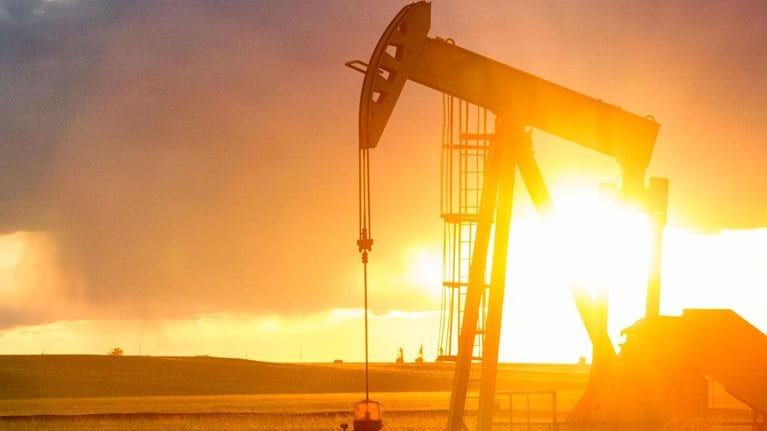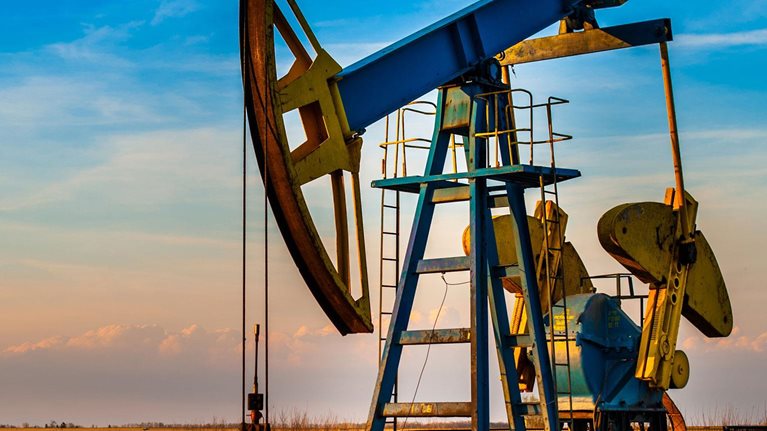The second quarter of 2018 was marked by series of events adding further uncertainty to both the supply and demand sides of the oil market, thus forcing the Organization of Petroleum Exporting Countries (OPEC) to continue taking actions to stabilize the market.
Key events during the second quarter of 2018
- Logistical bottlenecks became evident in the Permian Basin. Most operators and services companies mention production is very close to outstripping pipeline takeaway capacity. Growth and investments are expected to be throttled back until new takeaway is available, with West Texas Intermediate (WTI) Midland having traded at a discount of over $15 per barrel since mid-July as marginal barrels have begun to move by truck.
- OPEC met in June and agreed to increase production by about 600,000 barrels per day. In a coordinated move, Russia also agreed to increase production by about 150,000 to 200,000 barrels per day.
- Mexico elected a new president, who will take office December 1. Energy policy changes are expected, and auctions of oil and gas blocks could be delayed.
- Venezuela continued to face political and economic challenges, which led to oil production dropping by more than 30 percent in the past year (from two million barrels per day in June 2017 to 1.34 million barrels per day in June 2018).
- The US government withdrew from the Iran nuclear deal and reimposed economic sanctions on Iran. The sanctions on Iran could eventually force traditional buyers, especially India, to seek alternate sources of crude oil, although deliberations between those nations continue. Experts predict a sharp reduction, perhaps as much as one million barrels per day, of Iran’s current production level of about 2.5 million barrels per day when the sanctions become effective in November. French national oil company Total has decided to withdraw from Iran, citing uncertain geopolitical environment.
- Escalating US and China trade tensions continued. The tariffs considered by China included a 25 percent duty on imports of liquefied natural gas (LNG) from the United States, which would reduce, though not eliminate, the advantage US LNG exporters enjoy due to low-cost domestic-gas production.
Steadily increasing oil prices coming out of the price trough have provided oil and gas operators confidence to invest, although in a more judicious manner, focused on capital efficiency. As a result of the combination of these investments and oilfield services and equipment (OFSE) subsegments with significant excess capacity, activity has increased and revenues for OFSE companies have grown. However, margins remain stubbornly flat, with productivity gains being largely captured by the exploration-and-production companies. Regarding paths forward, a number of outcomes could materialize, varying by subsegments: new technology-enabled value propositions could lead to some OFSE companies capturing an increased portion of the value they are creating, thus improving margins; the status quo could prevail with excess capacity weighing on pricing and margins; or a supply-and-demand disruption could upset the relatively steady trends of the past several quarters.
Would you like to learn more about our Oil & Gas Practice?
Broad market trends
The broad demand-driven recovery of global oil markets continued in the second quarter. For the six prior quarters, production restraint on the part of OPEC countries and Russia drained excess oil from the market, forcing countries to draw on stockpiled crude oil. With the June 2018 decisions by OPEC and Russia to raise production by almost one million barrels per day, it appears supply and demand are starting to balance.
Demand
Global demand for liquids (including crude oil, natural-gas liquids, and condensates) totaled 100.6 million barrels per day at the end of the second quarter, an increase of approximately two million barrels per day over the same quarter of the previous year. The United States had the highest demand (about 20.6 million barrels per day), followed by Europe (15.4 million barrels per day) and China (13.4 million barrels per day). In terms of demand growth, China and the United States led the way, with aggregate demand growing by one million barrels per day between them.
According to the International Energy Agency, full-year global demand for crude oil is forecast to rise by 1.4 million barrels per day in 2018 and an additional 1.5 million barrels per day in 2019. The agency sees fourth-quarter demand in 2018 growing more robustly than demand growth in the second and third quarters of 2018.
This growth in oil and natural-gas demand has been supported by robust GDP growth. The US GDP rose at an annualized rate of 4.2 percent in the second quarter of 2018, the fastest rate in four years. China’s economy grew 6.7 percent in the second quarter. And India’s economy expanded 7.7 percent in the three-month period that ended on June 30, 2018. While historical trends have supported increased demand, many question what the next driver for volatility and reduced economic growth will be and when it will arrive.
The biggest potential storm cloud hanging over the global oil-and-gas market is the threat of a full-blown global trade war, principally involving the United States and China, which is a significant importer of LNG. Tens of billions of dollars have been invested in building LNG export terminals in the United States. Domestic LNG terminals that are under construction may be the first victims if a trade war erupts.

OFSE quarterly: Continued rise of North American shale amid increasing oil prices
Supply
Global supply for the second quarter of 2018 totaled about 100.3 million barrels per day, roughly 300,000 barrels per day under demand. The largest national producers were: the United States (11.5 million barrels per day), Russia (11.3 million barrels per day), and Saudi Arabia (10.6 million barrels per day). Nations continue to draw down on their stockpiles due to supply shortfall. The United States accounted for most of the supply growth during the period of April through June 2018, growing roughly 1.6 million barrels per day over the prior 12 months.
Price trends
Prices saw some volatility within a tight range: Brent traded in the $66 to $79 per barrel range during the second quarter while WTI traded in the $61 to $71 per barrel range.
A consensus has emerged that WTI crude oil will sell in the $65 to $75 per barrel range during the second half of the year. For the year, WTI is forecast to sell at an average of about $66 per barrel while Brent is expected to enjoy a full-year premium of about $5.50 per barrel over WTI.
For 2019, the Energy Information Administration expects WTI prices will average about $64 while Brent will slip to a yearly average of about $71 per barrel. Investment banks surveyed by the Wall Street Journal predicted Brent would sell for an average of $74.55 during 2019 while WTI would fetch about $68 per barrel, on average, for the year.
As shown in Exhibit 1, though, after nearly three years of rising prices, the market expects crude-oil prices to remain depressed in the near term.

Spending and capital expenditures
For the second quarter of 2018, capital expenditures held steady compared with the first quarter, at about $55 billion. But that sum is a far cry from the halcyon days of the second quarter of 2014, when capital outlays exceeded $100 billion per quarter (Exhibit 2).

OFSE market performance
There were a few clear positive developments during the second quarter:
- Offshore rig counts rose marginally relative to the first quarter.
- Revenue rose an average of 6 percent for the overall OFSE segment compared with the previous quarter, though there was a wide range of performances.
However, these positive developments were offset to some degree by a number of less-positive developments:
- Onshore rigs count remained largely flat while production grew, a function of efficiency gains and completion techniques that have produced more barrels with fewer rigs.
- Margins of earnings before interest, taxes, depreciation, and amortization remained steady for most subsectors, almost at the lowest level in the past ten years.
- Total returns to shareholders (TRS) continued to be weak for the entire sector.
- Book-to-bill ratios for equipment and engineering, procurement, and construction (EPC) companies showed signs of deteriorating again.

During the second quarter of 2018, US producers extracted about 2.2 million barrels per day, or 43 percent, more crude oil from onshore unconventional formations than they did in the second quarter of 2014, right before the beginning of the price collapse. And, as shown in Exhibit 3, they did that using about 50 percent fewer rigs compared to four years earlier.
As was evident in second-quarter earnings calls, “capital discipline” continued to be the watchword in the oil patch, as investors and lenders continued pressing producers and service providers to produce more with the same level of capital investment or less. While higher and stable crude-oil prices convinced some producers to increase their 2018 capital budgets, most did not move meaningfully.

Higher oil prices finally started to result in revenue growth for the OFSE sector, increasing 6.8 percent versus the first quarter and 15 percent compared with the same quarter of the previous year (Exhibit 4). While the second quarter saw revenue growth, margins, on the other hand, remained largely flat compared to the first quarter and down 3.3 percent compared with the second quarter of 2017 (Exhibit 5).

- Equipment. Revenues were up 7.5 percent compared with the first quarter and almost 18 percent compared with the second quarter of the previous year. In our opinion, this revenue increase doesn’t indicate a structural return to capital reinvestment. We believe that further increase in oil prices and activity are required to truly restart capital reinvestment in most OFSE subsectors. It is also worthy to note that capital spending by the operators remained largely flat during this period. While the revenues grew for the subsector, margins remained largely flat, indicating the manufacturers were not able to keep costs fixed. We believe that for the foreseeable future, significant overcapacity remains in the manufacturing sector, and unless this overcapacity is fundamentally addressed, margins will continue to remain depressed.
- EPC. Revenues for EPC firms were up almost 10 percent compared to the first quarter and flat compared with the second quarter of the previous year. This revenue volatility is not atypical for the subsector given the lumpiness in operators’ spend profiles. Margins remained largely unchanged.
- Assets. Revenue grew marginally by 5.7 percent compared with the previous quarter and almost 15 percent compared with the second quarter of the previous year. We believe most of this growth reflects the slight increase in offshore rig count that was noticed this quarter. However, the margins for the subsector were down compared with the previous year.
- Services. Revenue remained largely flat compared to the first quarter of this year. However, there was a large jump compared with the previous year. Margins continued to remain largely depressed; the slight improvement compared with last year, we believe, is driven by marginal price increases that the sector has been able to extract and by individual companies’ efforts to improve productivity. Significant opportunities remain in this subsector to improve performance and efficiency.
- Integrated companies. The large integrated companies returned similar performance, with revenue increases not completely translating into margin performance.
As a whole, the sector continues to significantly underperform both the S&P 500 and Brent oil prices. The segment generated cumulative TRS of -6.8 percent since January 2015, though some subsegments have performed better than that blended return while others have performed even worse than it (Exhibit 6).



